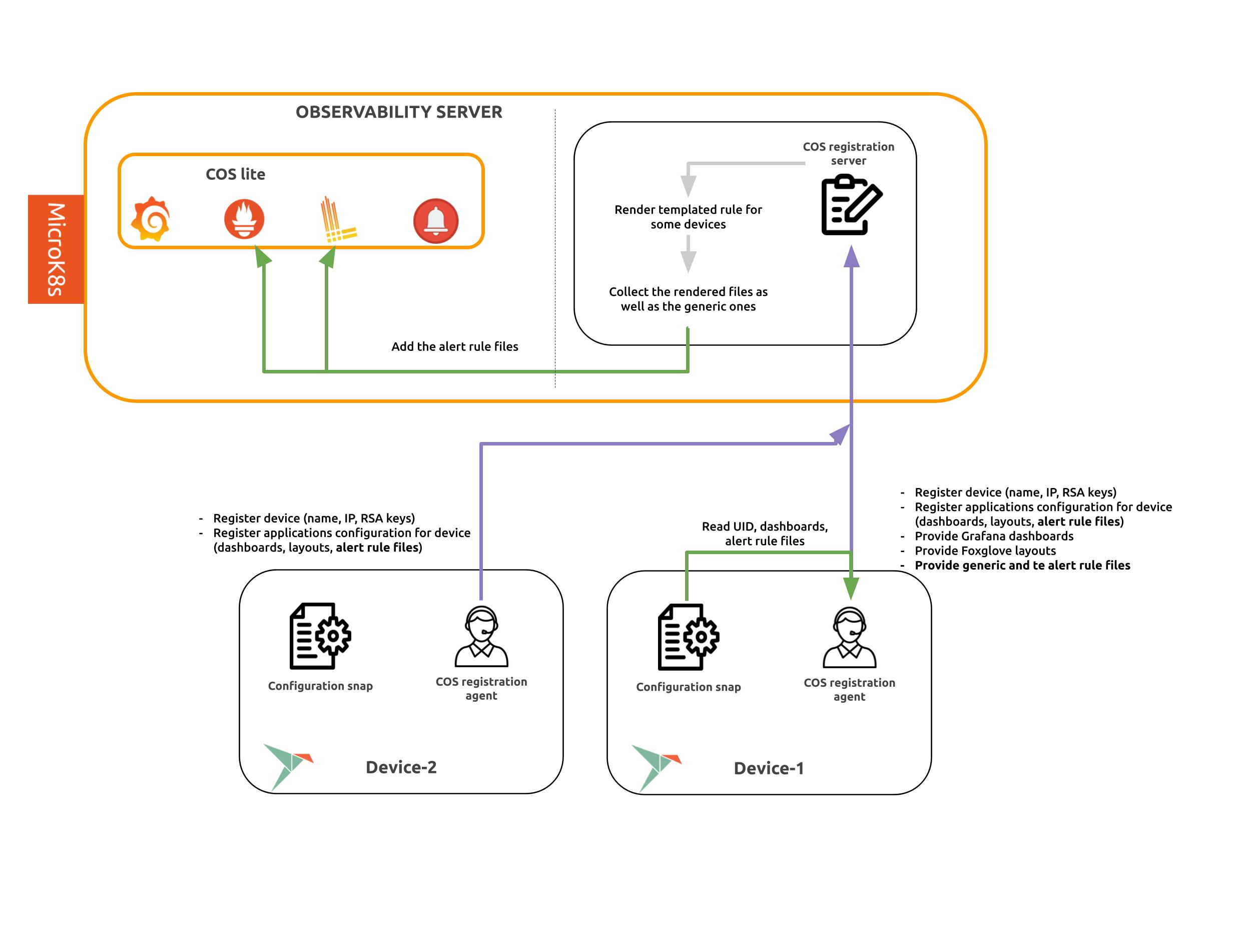Alert rules configuration from device¶
Warning
Beta Notice: COS for robotics is currently in beta.
Content and features may change,
and some functionality may be incomplete or experimental.
Feedback is welcome as we continue to improve.
Alerts rule file can be defined in Prometheus and Loki to trigger notifications on the Alertmanager.
These alert rule files can be provided by the devices directly and then hosted on the
COS-registration-server.
This allows devices to deploy the alert configurations they need specifically or configurations that could be used by any other device.
Rules uploaded on the COS-registration-server¶
The COS-registration-server can host alert rule files.
The supported rule files applications are Prometheus and Loki.
The server currently supports two types of rules:
standard alert rule files: directly passed to the corresponding applications
templated alert rule files: Jinja2 templated rule file to render against specific devices
The templated rule files are designed to allow the creation of
an alert that will only affect a defined list of devices.
The templated rule will be rendered for the devices that explicitly
declared it in the device-loki-alert-rule-files or
device-prometheus-alert-rule-files
while registering on the COS-registration-server with the
COS-registration-agent.
Templated alert rule files format¶
The templated rule files are Jinja2
templates.
In the context of alert rules with COS, the Jinja2 start and stop variable are: %%.
The current supported variable is: %%juju_device_uuid%%.
Below is an example of a templated alert rule file:
groups:
- name: low-memory/%%juju_device_uuid%%
rules:
- alert: 5GBLowMemory%%juju_device_uuid%%
annotations:
description: "Low memory alert specific to {{ $labels.device_instance }}"
summary: "Robot {{ $labels.device_instance }} has less than 5 GB of memory free."
expr: (node_memory_MemFree_bytes{device_instance="%%juju_device_uuid%%"})/1e9 < 5
for: 5m
labels:
severity: critical
Note
The name of the group as well as the name of the alert must be templated to ensure its uniqueness.
Alert rule files’ flow from device to COS-registration-server and the applications¶
In the following diagram,
we can see that the alert rule files distributed with the “Device-1”
are getting uploaded to the COS-registration-server
by the COS-registration-agent.
After that, the “Device-2” is also registering to the server and explicitly referring to the templated rule without having to upload it.
The COS-registration-server renders the templated files for
the devices that specified them,
depending on the type of alert rule file.
It then sends the rendered files as well as the non-template ones
to the various applications.

